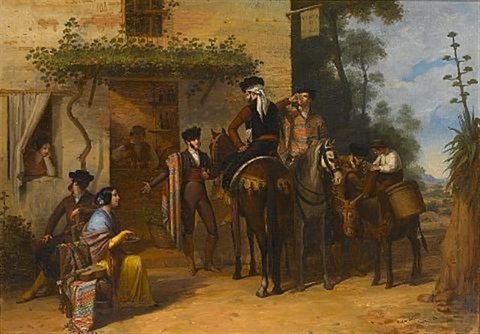Andalusian costumbrismo
In the late 18th century and beginning of 19th the Andalusian Costumbrism (Costumbrismo andaluz) was originated due to a number of factors.
In 1783, the King of Spain Charles III regulated the social situation of the gypsy ethnic group. After centuries of persecution and exclution,they achieved an significantly improving of their legal situation.
After the Spanish War of Independence (1808-1812) there was a growing sense of pride, in opposition to afrancesado (frenchified) prototype.
The image of majo showed strength, considered as a prototype of grace, self-interest and authenticity. In this traditional ambiance, the cañí style emerged and the bullfighting schools of Seville and Ronda (Malaga).
Without forgetting, the emergence of bandits and the fascination of European travelers for the Andalusian traditions.
All these elements defined the pleasure for this Andalusian Costumbrism, which was very successful in the Court of Madrid.

Escena andaluza (1849), Joaquín Domínguez Bécquer